|
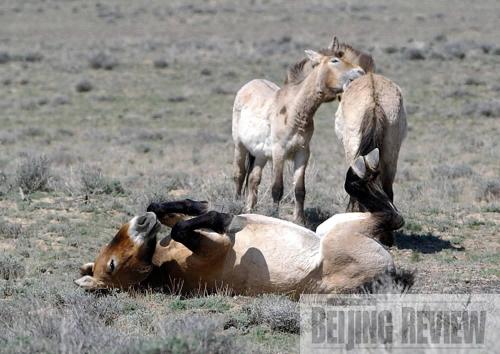 |
|
Przewalski's Horse, a type of wild horse, representative animal for Xinjiang Uygur Autonomous Region (/LUO XIAOGUANG) |
Yin Xia, a native of Shanxi Province, did not know she shared her hometown with a world-renowned animal until this past May, when officials named two Shanxi natives as representatives for the province—the leopard and the flowering plant dangshen, also known as the poor man's ginseng—during a national event.
Yin, who now works in Beijing, went online to find that Shanxi is home to the North Chinese leopard, a subspecies of the wild cat native to north China.
"Shanxi is a major province for energy and the population of this animal would decrease or even die out wherever there is a mining industry. Though labeled as a state-level animal, its survival is critically endangered," said Yin.
Yin soon realized that she was concerned about conserving biodiversity. She paid attention to the 23rd International Congress for Conservation Biology that began on July 11 in Beijing. She learned from reports of the meeting that the extinction rate of species today is as high as 100 to 1,000 times faster than normal, and that a species vanishes from the world every 20 minutes.
"The biodiversity on our planet is facing unprecedented threats," she said.
Biodiversity at issue
The annual meeting not only provided a place for professional researchers to communicate, but also served as a platform for organizations and individuals dedicated to conservation to exchange views and information with those researchers.
The meeting covered various topics including conservation of biodiversity, conservation of endangered species, nature reserve management and sustainable development. The 23rd session was the first held in Asia by the State Forestry Administration of China (SFAC), Chinese Academy of Sciences, and Society for Conservation Biology (SCB). With the theme "Conservation: Harmony for Nature and Society," the six-day meeting attracted more than 1,200 experts, scholars and individuals from 74 countries dedicated to conservation.
"The human race still faces a series of problems, including resources depletion, ecological deterioration and species extinction," said Jia Zhibang, Director of the SFAC, at the meeting's opening ceremony. "The sustainable development of human society still needs us to cope with these unprecedented challenges."
He said China would continue to improve its wildlife conservation system, strengthen the protection of the natural ecosystem and work to save endangered species.
"Our current biodiversity is the result of billions of years of evolution. It provides rich resources for human existence and development, and also plays a crucial role in maintaining the ecological balance and improving the natural environment," he said.
The national selection of representative species for all provinces and regions in China began on May 22, 2008, International Biodiversity Day. It was a national campaign to boost public awareness on biodiversity conservation. The final results were decided by Internet votes and experts' appraisals.
More than 310,000 votes were cast on the Internet prior to March 22, 2009. After consultation with experts, 31 provinces, municipalities and autonomous regions of China's mainland, Hong Kong, Macao and Taiwan all have had their own representative plant and animal species selected.
China is a vast country and its natural ecosystem differs significantly from region to region, resulting in a rich and complicated tapestry of biodiversity. Since most provincial borders are formed by mountains, rivers and other natural features, every province is endowed with a unique natural environment; they all have their own animal and plant species, along with cultures and customs that go along with them.
"Since every province has rich biodiversity, it's not easy to select a single representative of all species," said Xie Yan, chief of the Wildlife Conservation Society, one of the sponsors of the selection. He said the "biological card" should cover as many different species as possible, and both the common species as well as the rare ones should be listed. "Most people don't know many species, especially plants. We have created a blog for each of the candidates for people to understand them."
In the organizer's opinion, the selection process for regional representatives is very important—as voters ponder which they want to select, they deepen their knowledge of the range of species as well. The "biological card" for each region is intended to become the area's image and brand and also boost public participation in protecting wildlife.
"The beauty and value of the biological world along with its worsening condition have contributed to arousing people's awareness to restrict their destructive behaviors, so as to protect biodiversity," said Xie.
Boosting awareness
China is one of the countries that are home to a high level of biodiversity and is also one where it has been gravely threatened.
"Like many other countries and regions, economic activities have a large impact on both animals and plants, the latter of which is facing larger difficulties in finding protection than the former," said Xie, explaining that animals can move away from danger while plants cannot.
She said that the Liaoning Province's plant representative, Siebold's Magnolia, is suffering from unrestrained exploitation due to its economic and ornamental value. "The plunderers dig the plants bag by bag, selling the valuables and dumping the rest. That's a crushing blow to the protection of the plant," she said.
According to her, humans have classified species as those that are valuable and those that are expendable according to their needs of life and production. Some species have been pushed to the verge of extinction because of over-exploitation. Forests are cut down to make room for "valuable" plants, endangering the survival of thousands of native species. Alien species have been introduced that change the natural biology of an area.
The rapid change of the global climate is also seriously impacting China's natural ecosystems and biodiversity. The Intergovernmental Panel on Climate Change, a scientific body tasked to evaluate the dangers of human-induced climate change, estimated that 20 percent to 30 percent of the species would face extinction if the temperature rises 1.5-2.5 degrees centigrade.
According to China's National Assessment Report on Climate Change, a comprehensive review compiled by multiple departments and experts, the country saw a 1.1 degree centigrade increase in temperature over the last 50 years, breaking down to a 0.22 degree centigrade increase every decade and surpassing the speed of the global temperature increase.
The latest edition of Red Book of Endangered Species in China reported that the country has a large proportion of at-risk wildlife on the Red List of Threatened Species of the International Union for Conservation of Nature—35 percent of invertebrates, 36 percent of vertebrates, 70 percent of gymnosperm plants and 87 percent of angiosperms are endangered.
Scientists have become increasingly aware that the rapid loss of biodiversity not only affects genes, species and ecology, but also damages the diversity of the human culture and its unique structure.
In China there are more than 200 endangered wild animals and thousands of rare wild plants that have been saved from extinction by groups that have established artificial propagation programs for these species, of which some have returned to the wild.
The 23rd International Congress for Conservation Biology also has information showing that China now has 6,500 vertebrates and 30,000 higher plants, accounting for 14 percent and 10 percent of the world's species, respectively. Such rare and endangered wild animals as the giant panda, the crested Ibis and the golden monkey are unique to the country.
"The protected species in the country have enjoyed a good environment for survival and a stable population. But those not receiving good protection are suffering from a sharp decrease in population numbers," said Xie, adding that humans have little knowledge about many species and often have no idea which need to be protected.
"It takes great effort and investment to protect some of the species that have greater needs from the environment. We hope to call for more attention and care for them via issuing 'biological cards,'" Xie said.
Statistics from the conservation biology meeting showed that there are 3,000 civilian organizations on environmental and biodiversity protection in China, while full-time employees of 40 percent of these organizations receive no payment. Such volunteers who work out of a sense of commitment are common on the environmental battlefield.
Many Chinese experts have worked on biodiversity protection besides their daily research work. They play a large role in protecting such rare animals as the giant panda, the Tibetan antelope and the Chinese river dolphin. More scientific projects and students are being drawn into the field of biodiversity protection as well.
"'Biological cards' won't remain unchanged for good and it will be re-selected in five or 10 years to reflect upcoming new species and to keep up a continuous awareness on the issue of biodiversity protection," said Xie.
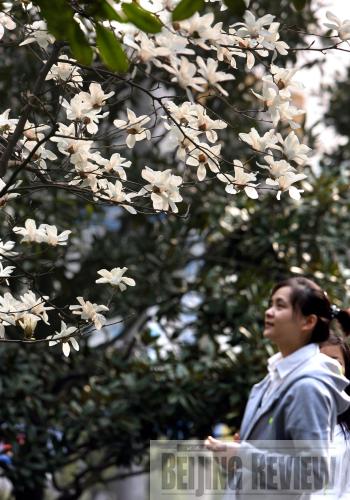 |
|
Magmolia, representative plant for Shanghai (LIU YING) |
 |
| Mandarin Duck, representative animal for Hebei Province (QIN GANG) |
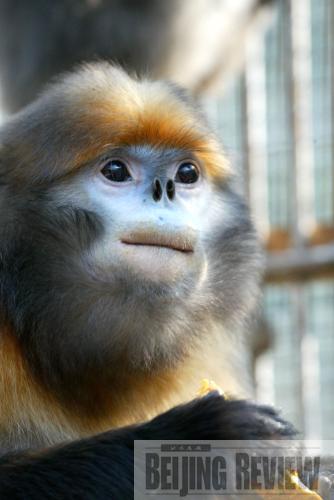 |
| Guizhou Golden Monkey, representative animal for Guizhou Province (GAO XUEYU) |
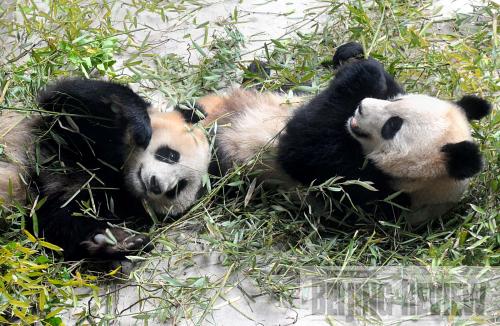 |
| Giant Panda, representative animal for Sichuan Province |
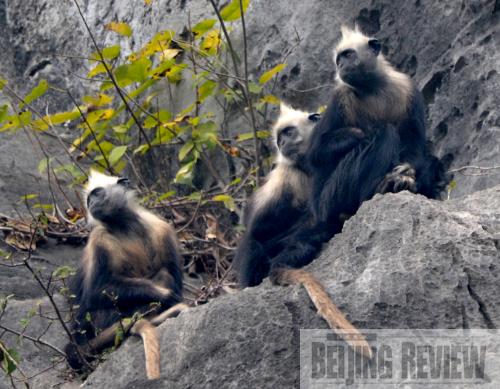 |
| Presbytis Leucocephalus, representative animal for Guangxi Zhuang Autonomous Region (ZHOU HUA) |
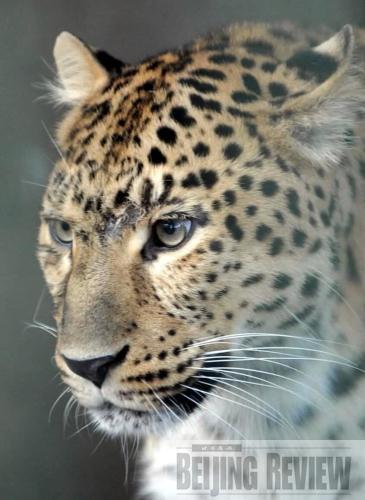 |
| Leopard, representative animal for Shanxi Province (ZHU XIANG) |
| 